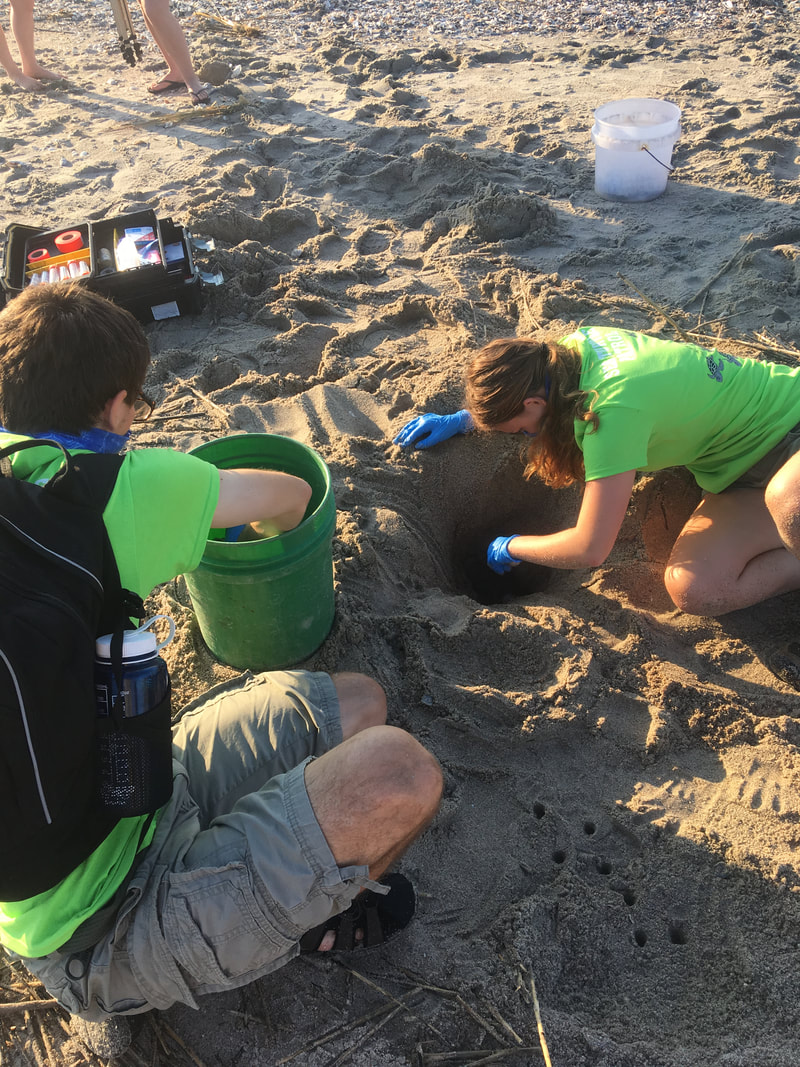|
Blog Post by: Autumn, Sea Turtle Intern
The relocation of eggs that have been laid in unsafe locations is a popular strategy for conservationists all across the world. Indeed, nests of crocodiles, sea turtles, and some birds have all benefited from this sort of artificial assistance (Pfaller 2009). Vulnerable nest relocation is even a strategy that we even employ here at Edisto Beach State Park during our morning turtle patrol. We relocate about 20% of nests that we deem to have been laid too close to the water or in an otherwise unsafe location, and we move them somewhere where they are not in danger of being washed away. However, I have recently wondered whether saving eggs laid in vulnerable locations may impose artificial selection that maintains poor nest-site selection. In other words, if we save turtles whose mothers laid them in unsafe locations, might they follow in mom’s footsteps and lay unsafe nests as well, negatively affecting the success of future generations? For this to be the case it would have to be true that some loggerheads consistently nest in unsafe locations while others nest in more safe locations, and also that they can pass this nest-location-selection trait on to their offspring. Thankfully, from what we know about sea turtles it appears that this is not a problem. First of all, loggerhead sea turtles do not consistently select nest sites at particular distances from the high tide line. Instead, the selection of unsafe nesting sites is distributed throughout the population, with an astonishing 97% of turtles selecting an unsafe nesting location at least once in their life (Pfaller 2009). Loggerheads seem to randomly choose to nest too close to the water, and they seem to do it at least once in their life. This means that relocating eggs vulnerable to the tide and erosion saves a lot of hatchlings, and it also means that the hatchlings that were saved are likely to choose safe nesting locations in the future when they hopefully return to Edisto! The wellbeing of our nesting population of sea turtles depends on many dynamic factors including environmental and anthropogenic impacts that we are just beginning to understand. One thing we do know is that from daily lifestyle changes to turtle patrol relocations there is a lot that we can be doing to help. Pfaller, Joseph B., et al. “Nest-Site Selection in Individual Loggerhead Turtles and Consequences for Doomed-Egg Relocation.” Conservation Biology, vol. 23, no. 1, 2009, pp. 72–80., doi:10.1111/j.1523-1739.2008.01055.x.
0 Comments
Leave a Reply. |
Leah SchwartzentruberSea Turtle Biologist Archives
June 2024
|

 RSS Feed
RSS Feed